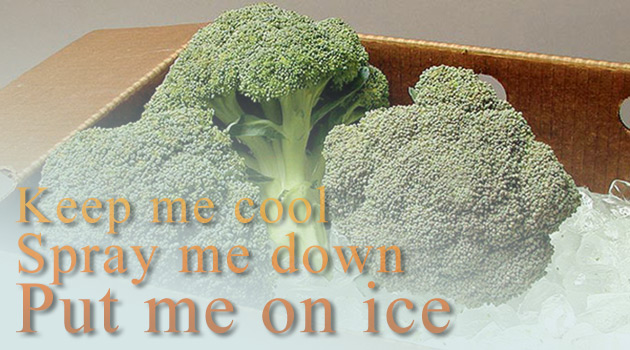- Harvest Bucket (7939) | Johnny's Selected Seeds' Coloring Book
- Chamomile Rake | Rust Prevention & Removal | Tech Sheet (PDF)
- Highbush Blueberry Rake | Maintenance, Rust Prevention & Removal | Tech Sheet (PDF)
- Baby Leaf Harvester | Instructions for Safety, Assembly, Operation & Maintenance | Tech Sheet (PDF)
- Carrot Harvesting, Handling & Storage | Johnny's Selected Seeds
- CoolBot–Air Conditioner Compatibility | Use, Temperature, Cooler Size & Insulation + Brand Recommendations | Tech Sheet (PDF)
- CoolBot | How to Build a Walk-in Cooler for Your Small Farm (PDF)
- CoolBot | Instruction Manual & Troubleshooting Guide (PDF)
- CoolBot Pro | Quick-Start Guide (PDF)
- CoolBot Pro | Spec Sheet (PDF)
- Cut-Flower Harvesting & Post-Harvest Care | Best Practices from Pros in the Slow Flower Community
- Floral Stem Cutter | Instructions for Mounting, Use & Care | Tech Sheet (PDF)
- Getting Started with Value-Added Foods & Farm Goods
- Cooling & Storing Chart for Freshly-Harvested Summer Produce
- Salanova Lettuce | Cutter Tool | Tech Sheet (PDF)
- Seed Storage Guide | Tech Sheet (PDF)
- Seed Storage Guidelines | Charts & Notes on Longevity for the Beginning Seed-Saver
- Classic Storage Crops | Post-Harvest Handling & Storage Guidelines
- Video: CoolBot® | Installation Instructions & Recommendations
- Video: CoolBot PRO | Installation Instructions & Recommendations
- Video: Sauce Master II Fruit & Vegetable Strainer | Quick Demo
- Video: Using Blanching Caps to Blanch Frisée (Chicory) in the Field at Satur Farms
- Video: CoolBot PRO | Tutorial with Jean-Martin Fortier
- Video: The Procona System for All-in-one Flower Harvest, Transport & Display
- Video: Baby Leaf Harvester for Greens, Mesclun, Spinach, Lettuces & Tender Aromatics
- Video: Gorilla Tubs® (formerly known as TubTrugs®)
- Video: Johnny's Harvest Knives, Machetes & Sharpeners
- How to Set up a Winter Cool Room | CoolBot + Inkbird + Space Heater = 21st-Century "Root Cellar"
- Chrysal Clear Universal Flower Conditioner | SDS
- Video: Tips & Recommendations for Dried Flowers • Tutorial with Joy Longfellow
- Original Maine Garden Hod (9870) | Johnny's Selected Seeds' Coloring Book
- Chrysal Classic Professional 2 Transport & Display (Holding) Solution | SDS
- Chrysal Clear Bulb Flower Conditioner | SDS
- Video: Choosing & Growing Paste Tomatoes for Sauce-Making • with Niki Jabbour
- Chrysal Professional 2 Transport & Display T-Bag | SDS
- Chrysal CVBN Flower Conditioner | SDS
- Chrysal Professional 1 Hydration Solution | SDS
- Chrysal Professional 3 Vase Solution Powder | SDS
- Chrysal Clear Bulb T-Bag | Cut-Flower Conditioner | SDS

CHART • Post-Harvest Handling & Storage of Summer Produce
Keep Your Summer Harvest at Peak Eating Quality
Once harvested, crops can quickly deteriorate in the summer heat. Whether you bring your vegetables to your own table or to market, you'll want to cool and store them quickly so they retain their appearance, flavor, and nutrient profile. Use this chart as a quick reference to cooling methods, temperature ranges, relative humidity, and approximate length of time vegetables can be held.
Note that these figures are approximate, and the methods are simply those in general common use in the US during warmer months of the year. There is no single right way to handle the harvest of a particular crop, so you will want to adjust your practices to the conditions at hand. The many variables to consider include quantity, size, and maturity of crop; the scale of your operation; time, labor, and equipment resources; microclimate; conditions at harvest and time of day; whether or not you plan to transport your produce; and how long you expect the particular crop will be stored before it is enjoyed.
Also keep in mind that just as the sun, wind, and heat of the field or greenhouse can quickly damage a fresh crop, so, too, can chilling injury occur at temperatures below optimum storage temperatures — even, in some cases,

We also offer the CoolBot PRO, a wi-fi enabled version you can control via a portable tablet or cell phone.
In this video, award-winning author, educator, and four-season market-gardener Jean–Martin Fortier gives us a tutorial on using the CoolBot PRO to set, monitor, and adjust your cool-room temperatures using your mobile device.
| CROP | TYPE | PREFERRED COOLING METHOD Click for Key |
OPTIMUM TEMPERATURE (T) | FREEZING/ CHILLING DAMAGE T * | RELATIVE HUMIDITY | STORAGE POTENTIAL |
| ARTICHOKE | Globe | RC FAC |
32°F ( 0°C ) | 30–31°F |
95% | 14–21 days |
| ASPARAGUS | HY | 32–36°F |
30.9°F ( -0.6°C ) | 95–100% | 14 days | |
| BEANS | Bush, Pole & Snap Varieties | FAC | 31°F ( -0.6°C ) | 90% | 7–10 days | |
| Lima/Butterbeans & Fava Varieties | HY preferred; FAC alternative | 37–41°F |
31°F ( -0.6°C ) | 95% | 5–7 days | |
| BEETS | Baby Beets & Greens For Full-Size Varieties, see |
FAC, HY, IC | 32°F ( 0°C ) | 30–31°F |
95–98% | 7–10 days |
| BROCCOLI | Standard, Leaf, Raab, & Sprouting Varieties | HY, IC | 32°F ( 0°C ) | 31°F ( -0.6°C ) | 95–98% | 10–14 days |
| BRUSSELS SPROUTS | See |
|||||
| CABBAGE | Fresh-Market, Early & Main Season, & Chinese Cabbage Varieties For Storage Varieties, see |
RC, FAC | 32°F ( 0°C ) | 30°F ( -1.1°C ) | 95–98% | 10–90 days |
| CARROTS | Early & Main Crop Varieties For Storage Varieties, see |
RC, HY | 32°F ( 0°C ) | 30°F ( -1.1°C ) | 95% | 28 days |
| CARDOON | HY | 32°F ( 0°C ) | 31°F ( -0.6°C ) | 98–100% | 14–21 days | |
| CAULIFLOWER | HY | 32°F ( 0°C ) | 30–31°F |
95–98% | 14–21 days | |
| CELERY | Stalk For Celeriac/Celery Root, see |
HY | 32°F ( 0°C ) | 31°F ( -0.6°C ) | 98–100% | 30–60 days |
| CHICORY | Endive, Escarole, Radicchio, & Italian Dandelion Varieties | HY, IC | 32°F ( 0°C ) | 30°F ( -1.1°C ) | 95–100% | 14–28 days |
| COLLARDS | RC, HY, IC | 32°F ( 0°C ) | 30°F ( -1.1°C ) | 95% | 7–14 days | |
| CUCUMBERS | FAC, HY | 45–50°F |
31.1°F ( -0.5°C ) | 90% | 14 days | |
| EGGPLANT | RC, FAC | 50–54°F |
30.6°F ( -0.8°C ) | 90–95% | 7–10 days | |
| FENNEL | Bulb | RC, HY | 32°F ( 0°C ) | 30–31°F |
95% | 21–28 days |
| GREENS, Leafy |
Arugula, Asian Greens, Mustard Greens, Pac Choi, Sorrel, & Specialty Greens | HY, IC | 32°F ( 0°C ) | 30°F ( -1.1°C ) | 95–100% | 7–21 days |
| KALE | HY, IC | 32°F ( 0°C ) | 30°F ( -1.1°C ) | 95–100% | 14–21 days | |
| KOHLRABI | Fresh Eating For Storage Varieties, see |
RC, HY, IC | 32°F ( 0°C ) | 30.2°F ( -1°C ) | 90–100% | 60–90 days |
| LEEKS | See |
|||||
| LETTUCE | HY, IC (except Romaine) | 32°F ( 0°C ) | 95–100% | 7–21 days | ||
| MELONS, Cucumis melo |
Netted Varieties | FAC, HY, IC | 36–41°F |
Risk of chilling injury below 35.6°F ( 2°C ) | 85–95% | 5–12 days |
|
See also Melon Growing Guide |
Smooth-skinned Varieties | RC | 45–50°F |
Risk of chilling injury below 45°F ( 7.2°C ) | 85–95% | 10–14 days |
| OKRA | FAC, HY | 45–50°F |
28.7°F ( -1.8°C ) | 95–100% | 7–10 days | |
| ONIONS |
Bunching/Green, Mini & Specialty Varieties For Storage Varieties, see |
HY, IC | 32°F ( 0°C ) | 30–31°F ( |
95–100% | 21–28 days |
| PEAS, in pod |
Snow & Shelling Varieties | HY, IC | 32°F ( 0°C ) | 30.9°F ( -0.6°C ) | 95–98% | 5–10 days |
| Snap Varieties | HY preferred; FAC alternative | |||||
| PEPPERS | FAC, RC | 45–50°F ( |
31°F ( -0.6°C ) | 90–95% | 14–21 days | |
| POTATOES | See |
|||||
| RADISHES | HY | 32°F ( 0°C ) | 30.5°F ( -0.8°C ) | 95–100% | Small: 7–14 days with tops; 21–28 days topped. Large (eg, Daikon): 42–70 days |
|
| SPINACH | HY, IC | 32°F ( 0°C ) | 31.5°F ( -0.3°C ) | 95–100% | 10–14 days | |
| SQUASH | Summer (soft rind) For Winter Varieties (hard rind), see |
RC, FAC | 41–50°F |
31.1°F ( -0.5°C ) | 95% | 7–10 days |
| SWEET CORN | HY, IC | 32°F ( 0°C ) | 31°F ( -0.6°C ) | 95–98% | Standard: 5–7 days; Super Sweet: 8–12 days |
|
| SWISS CHARD | HY or FAC preferred; RC alternative | 32°F ( 0°C ) | 15–20°F |
95–98% | 7–14 days | |
| TOMATOES | RC, FAC | For ripening: For storage: |
90–95% | 4–7 days | ||
| TURNIPS | Summer Varieties | HY, IC | 32°F ( 0°C ) | 95% | 10–14 days with tops | WATERMELON Citrullus lanatus var. lanatus |
HY, IC | 45–50°F |
Risk of chilling injury below 45°F ( 7.2°C ) | 85–95% | 14–21 days |
* Significant chilling damage can occur 10–20°F above freezing.
 Key to Cooling Methods
Key to Cooling Methods
RC = Room Cooling
The process of removing heat from freshly harvested produce within a closed space fitted with a mechanical cooling system, such as air conditioning.FAC = Forced-air Cooling
Using pressure/fans to pull refrigerated air through freshly harvested produce to remove heat.HY = Hydrocooling
The process of removing heat from freshly harvested produce by bathing it in ice water.IC = Icing
The use of ice for cooling, either by package icing or by bulk application to the top of a load.Learn More
To learn more, we encourage you to take advantage of the abundant resources published by Johnny's and local and regional educational organizations.
Additional Resources from Johnny's
- Beat the Heat
- Part 1: Cultural Practices to Protect Your Crops • Article
- Part 2: Getting Your Cool-Weather Crops Through the Summer Heat • Article
- Heat-Tolerant Varieties • Product List
- Summer-Plant for Fall-Harvest & Storage Varieties • Product List
- Post-Harvest Storage of Fall/Winter Storage Crops • Recommendations
References & Further Reading
- ATTRA Western Sustainable Agriculture Research & Education (SARE) Farm Internship Curriculum & Handbook. Harvest/Post-harvest Handling & Food Safety - Field Exercise
- Handling & Cooling Techniques for Maintaining Postharvest Quality. University FL Cooperative Extension. PDF
- Maintaining Produce Quality & Safety. University of CA at Davis, Division of Agriculture & Natural Resources. Postharvest Technology Center
- Post Harvest Handling for Best Crop Quality. WI School for Beginning Market Gardeners. Tip Sheet
- Postharvest Commodity & Technology Series. NC State University, Biological & Agricultural Engineering. Extension Publications
- Small-scale Postharvest Handling Practices: A Manual for Horticultural Crops. Ch 6: Temperature & Relative Humidity Control. UCA at Davis. Postharvest Technology Research & Information Center
- Texas Vegetable Growers Handbook. Ch 10: Harvesting & Handling. TX A&M AgriLife Extension Vegetable Resource Guides
- Farm Cooler Checklist. University VT Extension. PDF

